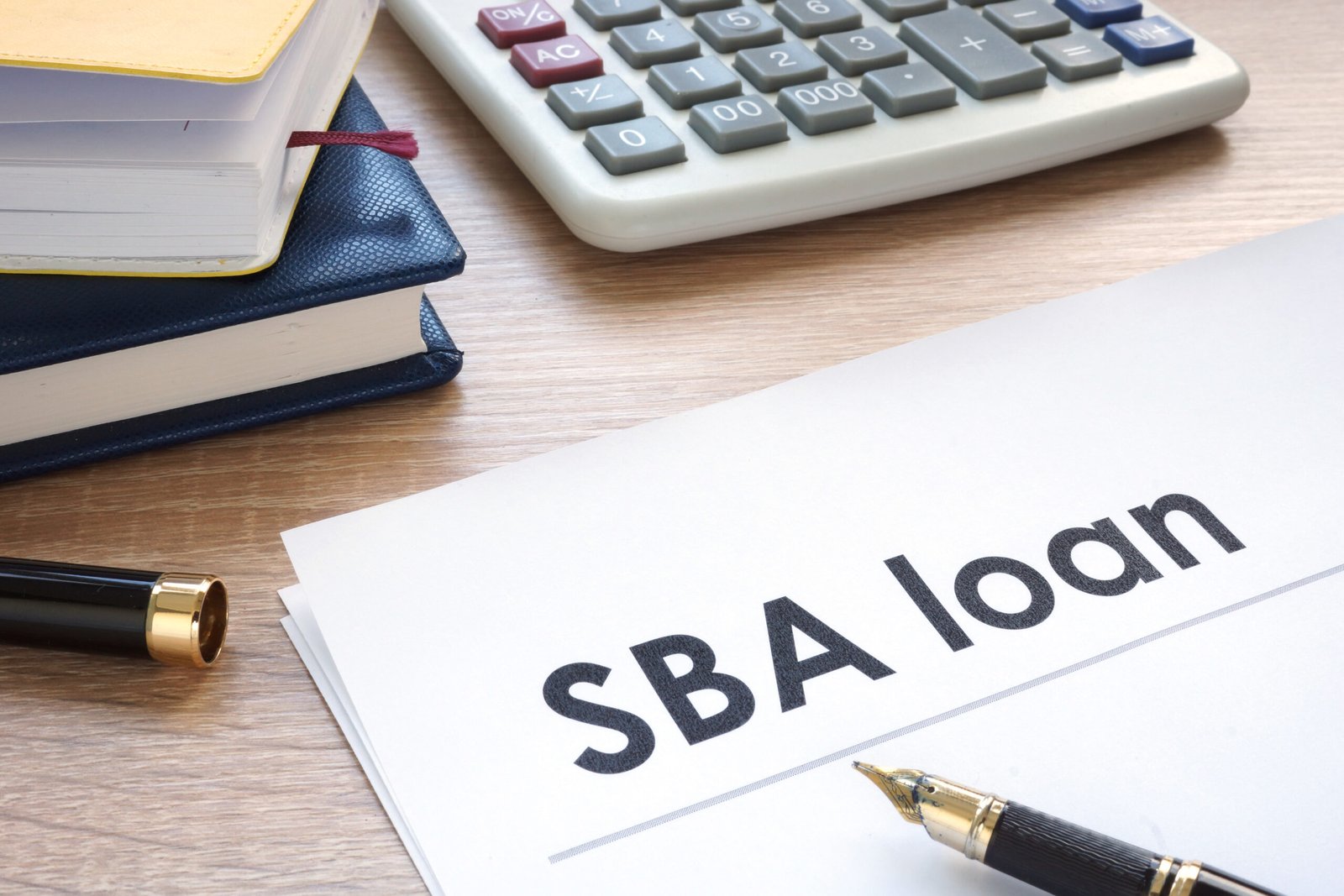Introduction to Commercial Real Estate Loans
Commercial real estate loans are specialized financing instruments designed to facilitate the acquisition, construction, or refinancing of properties that are utilized for business purposes. Unlike residential mortgages, which are meant for homes or residential properties, commercial loans cater to a wide range of investment properties, including retail centers, office buildings, industrial warehouses, multi-family housing, and mixed-use developments. These loans are essential for investors aiming to capitalize on the lucrative opportunities presented in the commercial property market.
The significance of commercial real estate loans lies in their ability to provide the necessary capital for ambitious investment projects. Investors often require substantial funding to purchase or develop profitable commercial properties. By obtaining a commercial loan, investors can leverage their capital, potentially increasing their return on investment through larger and more profitable property ventures. This financing avenue also allows for the expansion of an investment portfolio, helping investors to diversify their assets and reduce risk.
Key motivations for seeking commercial real estate loans include the desire for passive income through rental revenue, potential appreciation in property value, and the strategic advantage of owning high-demand properties in prime locations. Additionally, many investors are drawn to the commercial real estate sector for its relative stability compared to other asset classes, especially in fluctuating economic conditions. Understanding the various types of commercial loans available, alongside their terms and conditions, equips investors with the knowledge necessary for making informed decisions in the competitive landscape of property investment.
Therefore, mastering the nuances of commercial real estate loans is critical for anyone looking to succeed in the property investment arena. By comprehending the fundamentals of these loans, investment strategies can be developed that capitalize on market transformations and opportunities, setting the groundwork for future success.
Types of Commercial Real Estate Loans
Investing in commercial real estate often necessitates the use of specialized financing options. Understanding the various types of commercial real estate loans available can provide investors with the necessary tools to make informed financing decisions. The primary types of loans include conventional loans, SBA loans, bridge loans, and hard money loans, each with its specific features, benefits, and drawbacks.
Conventional loans are one of the most commonly sought-after forms of financing. Typically offered by banks and credit unions, these loans usually require a substantial down payment and exhibit competitive interest rates. They tend to support long-term property investment, benefiting investors who aim for stable cash flows. However, strict credit requirements and loan-to-value (LTV) ratios can pose challenges for some borrowers.
Small Business Administration (SBA) loans cater specifically to small businesses venturing into commercial real estate. These loans, particularly the SBA 7(a) and 504 loan programs, offer favorable terms, including lower down payment requirements and extended repayment periods. However, the application process can be long and exhaustive due to detailed documentation and eligibility criteria, which can discourage some investors.
Bridge loans serve as temporary financing solutions intended to “bridge” the gap between immediate funding needs and long-term financing. Often utilized in real estate transactions, these loans feature quick approval processes, allowing investors to act swiftly in competitive markets. Nonetheless, they generally come with higher interest rates and are meant to be used for short durations, making them a less sustainable option for long-term ownership.
Finally, hard money loans, provided by private investors or firms, offer an alternative source of capital. These loans emphasize the value of the property rather than the borrower’s creditworthiness, enabling quicker access to cash. However, they typically involve higher costs and shorter repayment terms, which can strain investors who are not prepared for the accelerated payback schedule.
In conclusion, the diverse types of commercial real estate loans available cater to various investor needs and property types. By understanding their unique features, benefits, and limitations, investors can make more strategic financing choices tailored to their acquisition goals.
Key Factors in Securing a Commercial Loan
When seeking commercial real estate loans, it is crucial to understand the various factors that lenders evaluate during the application process. Lenders meticulously assess an applicant’s creditworthiness, property type, condition, location, and income potential. Understanding these parameters can significantly enhance an applicant’s chances of securing the necessary funding.
First and foremost, creditworthiness plays a vital role in the evaluation. Lenders typically require a strong credit score, demonstrating the borrower’s reliability in repaying debts. A score above 700 is generally seen as favorable, while scores below this threshold may raise concerns. Moreover, lenders may examine the borrower’s credit history, including past defaults or delinquencies, as these can adversely impact loan approval.
Next, the type and condition of the property are important in determining loan eligibility. Commercial properties are categorized into various types, including office buildings, retail spaces, industrial properties, and multifamily housing. Each category comes with its unique risk profile and financial performance metrics. Furthermore, the physical condition of the property affects its value; lenders prefer properties that are well-maintained and reliable, as this reduces risk for them.
Location is another key factor influencing commercial real estate loans. The property’s geographical context can have a significant impact on its income-generating potential. Areas experiencing economic growth typically attract more investment, making them favorable for lenders. Conversely, properties located in declining or unstable neighborhoods may struggle to secure financing.
Lastly, the income potential of the proposed investment property cannot be overlooked. Lenders closely scrutinize financial documentation, including income statements, rent rolls, and property appraisals. Properties that showcase strong cash flow and occupancy rates are more likely to receive favorable loan terms. By gathering the appropriate documentation and addressing these key factors, borrowers can enhance their prospects for obtaining competitive commercial real estate loans.
Understanding Loan Terms and Conditions
When it comes to commercial real estate loans, comprehending the essential terms and conditions is crucial for any prospective investor. These agreements often encompass numerous components that can significantly impact the financing experience. One of the primary terms to understand is the interest rate, which affects the overall cost of borrowing. Interest rates for commercial loans may vary based on several factors, including the creditworthiness of the borrower, prevailing market conditions, and the specific lender, typically ranging from fixed to variable rates.
Another key metric in commercial real estate loans is the loan-to-value (LTV) ratio. This ratio compares the amount of the loan to the appraised value of the property. For instance, if an investor secures a loan of $1 million for a property valued at $1.25 million, the LTV ratio would be 80%. A lower LTV often suggests reduced risk for lenders, which could lead to more favorable terms for borrowers. Understanding how LTV ratios work can empower investors to negotiate better financing options.
Additionally, amortization periods play a vital role in the loan structure. This term refers to the length of time over which the loan will be repaid. In commercial real estate, amortization periods can range from 10 to 30 years, directly influencing monthly payment amounts and overall interest accumulation. Investors should carefully consider the amortization schedule that aligns best with their financial goals.
Lastly, potential prepayment penalties should not be overlooked. Some lenders impose penalties if a borrower pays off their loan early, impacting flexibility and future investment strategies. Recognizing these conditions and negotiating terms can promote clarity and establish a foundation for successful property investment.
The Importance of a Solid Business Plan
When venturing into the realm of commercial real estate loans, having a well-structured business plan becomes indispensable for investors seeking successful property acquisition. A comprehensive business plan not only provides direction and strategy but also serves as a critical document for securing financing from lenders. By presenting a clear outline of how proposed investments will be managed, a solid business plan significantly enhances an investor’s credibility and the likelihood of loan approval.
One of the pivotal components of an effective business plan is a thorough market analysis. This analysis should encompass an evaluation of the current market landscape, including trends, demands, and potential challenges specific to the proposed property type. Understanding the local demographics and economic indicators helps demonstrate to lenders that the investor has a firm grasp of the market dynamics, which is vital for the success of the investment and repayment of the commercial real estate loans.
Another essential section is the financial projections. Investors need to provide detailed forecasts of expected revenues, expenses, and cash flow over a defined period. Financial projections should be realistic and based on sound assumptions to instill confidence in lenders regarding the investment’s profitability. Accurate financial data, coupled with a solid understanding of operating expenses, can significantly strengthen a loan application.
Lastly, outlining operational strategies within the business plan is crucial. This section should detail how the property will be managed and maintained, along with strategic marketing approaches aimed at attracting potential tenants or buyers. By articulating a clear operational plan, investors can assure lenders that they possess the skills necessary for effectively mobilizing resources, maximizing returns, and minimizing risks associated with the asset.
Finding the Right Lender
When embarking on the journey of obtaining commercial real estate loans, identifying the right lender is a pivotal step that can significantly impact the overall success of your investment. The landscape of financing options is diverse, comprising traditional banks, credit unions, and alternative lenders, each with their unique offerings and loan structures. Understanding the characteristics of these lenders is essential when comparing your options and making an informed decision.
Traditionally, banks are a primary source for commercial real estate financing. They often provide competitive interest rates and extended loan terms, making them an attractive choice for established investors with a robust financial history. However, banks may impose stringent lending criteria, necessitating a solid credit score and substantial documentation. On the other hand, credit unions, which operate as member-owned financial cooperatives, might offer a more personalized service and lower fees. Their focus on community-oriented lending often results in more flexible terms, although they may also have a lesser amount of funds available to lend compared to larger banks.
Alternative lenders have gained prominence in recent years, catering to a growing demand for more accessible commercial loans. These entities, which can range from online lenders to private equity firms, typically offer expedited processes and less stringent qualifying criteria. However, borrowers should be cautious as interest rates from alternative sources can be higher. Evaluating a lender based on several crucial factors, including loan terms, customer service, and their expertise in commercial real estate financing, is vital. It is advisable to seek lenders who have a proven track record in financing your specific type of property, whether it be retail, office spaces, or multifamily housing.
Ultimately, conducting thorough research and comparing multiple lenders will empower you in securing favorable terms for your commercial real estate loans, enhancing your investment potential and financial stability.
The Application Process: Step-by-Step Guide
Embarking on the journey of acquiring commercial real estate loans necessitates a well-structured application process. This journey begins with initial research, where potential borrowers gather information on different loan options available. Understanding the specific needs of the investment property, whether for office space, retail, or a multifamily unit, will guide the selection of the appropriate loan type.
The next step is pre-qualification. At this stage, applicants submit basic financial information to lenders, who will provide an estimated loan amount they qualify for based on factors such as creditworthiness, income, and overall financial health. This step is crucial, as it helps applicants assess their budget and narrow down potential properties.
Following pre-qualification, the actual application process begins. Applicants must complete a detailed loan application form, providing comprehensive data about their financial status, the proposed property, and business plans. Documentation typically required includes tax returns, personal and business financial statements, and property details. Ensuring that all information is accurate and complete can significantly expedite the approval process.
Once the application is submitted, the lender will review it, which may include further verification of financial information and an assessment of the property in question through an appraisal. The timeframe for approval can vary, commonly taking anywhere from several weeks to a few months, depending on the complexity of the loan and the lender’s policies.
Throughout this process, applicants may encounter challenges such as insufficient documentation, low credit scores, or discrepancies in property valuation. By being prepared and addressing these potential issues proactively, borrowers can enhance their chances of securing commercial real estate loans. Overall, thorough preparation and understanding of each step can lead to a smoother application experience.
Common Mistakes to Avoid When Applying for a Commercial Loan
Applying for commercial real estate loans can be a complex process, and many investors inadvertently make mistakes that can jeopardize their chances of approval. One of the most significant pitfalls is inadequate research. Before initiating the loan application process, it is essential for investors to understand the various types of commercial loans available, including conventional loans, SBA loans, and bridge loans. Each type has specific requirements and qualifications, and failing to match the correct loan type with the intended investment can lead to complications or denial.
Another common mistake is insufficient documentation. Lenders require specific financial documents to assess an applicant’s creditworthiness and investment viability. Prospective borrowers should prepare detailed financial statements, tax returns, and relevant property details. Omitting or misrepresenting information can not only delay the approval process but may also lead to outright denial. It’s advisable to review the lender’s checklist and ensure that all documentation is thorough and accurate before submitting the application.
Additionally, poor credit management can be detrimental when seeking commercial real estate loans. Lenders typically evaluate the applicant’s personal and business credit scores as part of the approval process. A low credit score can raise red flags for lenders, indicating higher risk. Borrowers should review their credit history before applying and take steps to rectify any discrepancies or outstanding debts. Maintaining a competent credit profile not only enhances the chances of obtaining favorable loan terms but also reflects responsible financial management, which is crucial in the eyes of potential lenders.
In summary, avoiding these common mistakes—such as neglecting research, failing to provide adequate documentation, and inadequately managing credit—can significantly improve an investor’s chances of securing commercial loans. Taking the time to prepare and understand the process is essential for successful property investment.
Conclusion: Your Path to Successful Property Investment
In navigating the landscape of commercial real estate loans, understanding the various financing options available is crucial for any prospective investor. Throughout this blog post, we have highlighted the importance of assessing different types of commercial loans, including fixed-rate and adjustable-rate mortgages, as they represent the backbone of your financing strategy. Each option carries its advantages and challenges, which must be thoroughly analyzed to align with your investment goals.
Additionally, we discussed the significance of a solid business plan and how it plays a vital role in securing commercial financing. A well-prepared plan not only demonstrates your vision but also showcases your ability to generate sufficient revenue from the property, ultimately instilling confidence in lenders. This preparatory step is essential in navigating the complexities of commercial real estate loans and ensuring a favorable outcome.
Another key point emphasized was the importance of creditworthiness and financial health when applying for loans. Maintaining a good credit score and understanding your debt-to-income ratio are critical factors that lenders consider. Being proactive about your finances can significantly enhance your chances of obtaining competitive loan terms, which may lead to substantial savings over time.
As you embark on your journey in the commercial real estate market, continual education and staying informed about industry trends are paramount. Engaging with knowledgeable professionals, attending workshops, and regularly reviewing market research will further equip you to make informed decisions. Proper financing will not only facilitate your entry into property investment but will also support your long-term aspirations. By adopting a well-informed approach, you set yourself on a path toward successful property investment, ensuring that your endeavors in commercial real estate are fruitful and sustainable.




